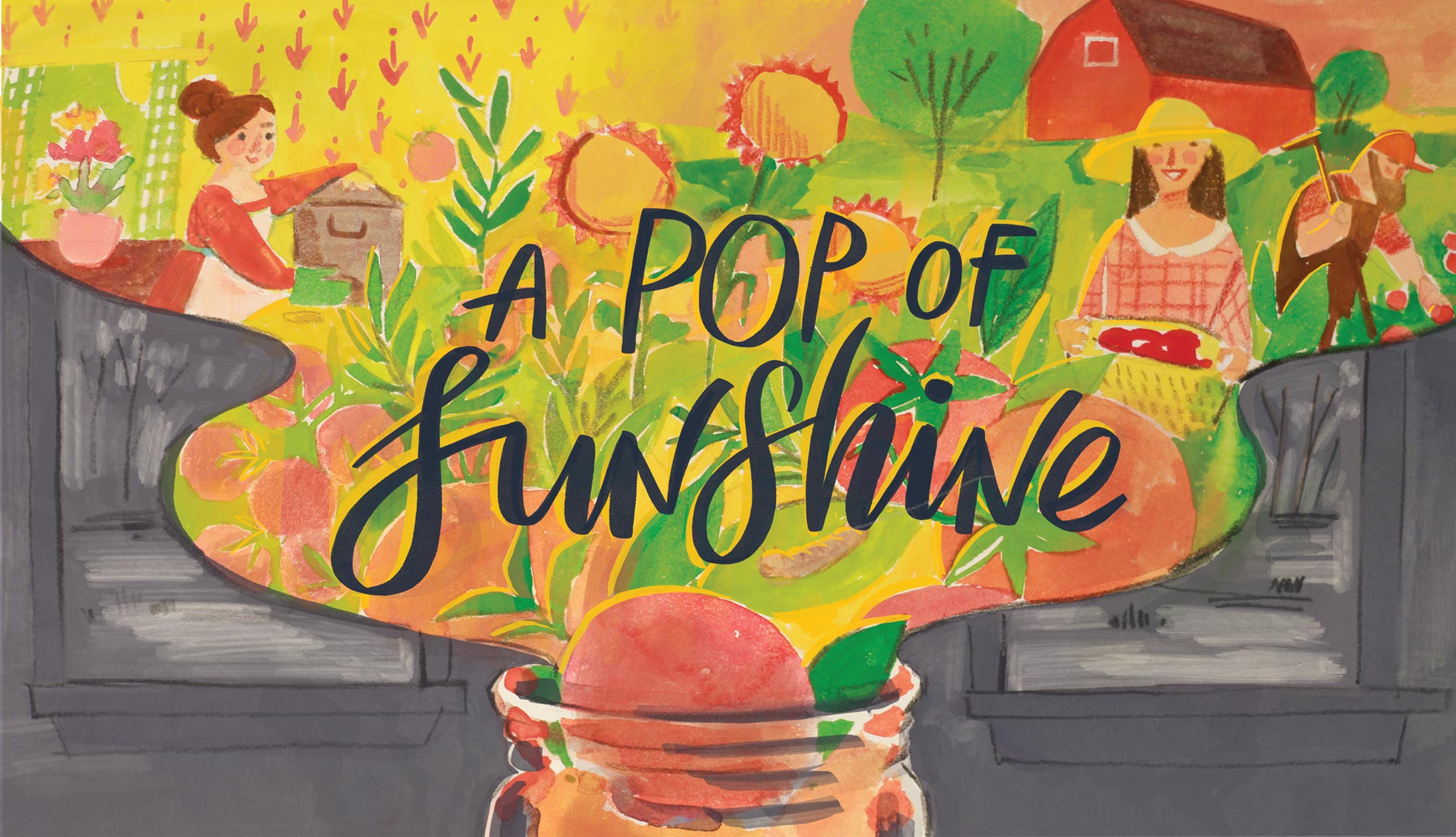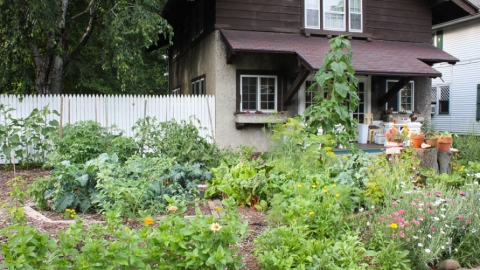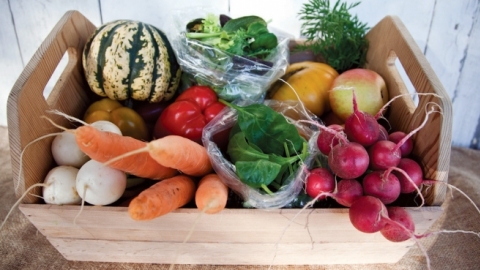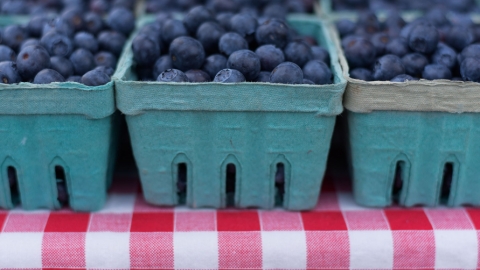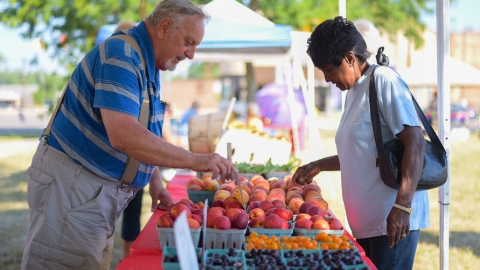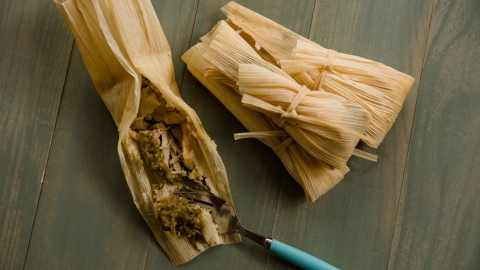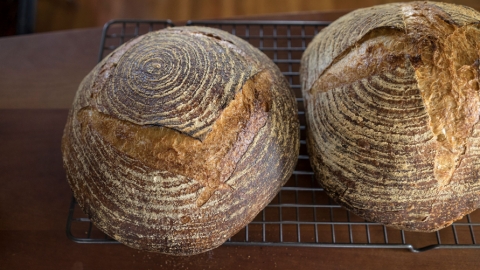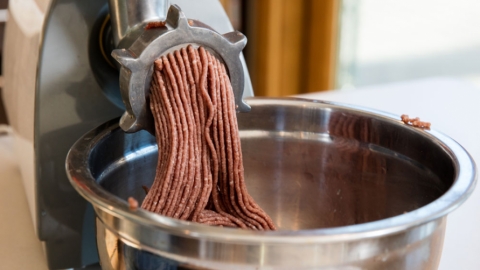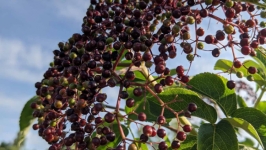A pop of sunshine: eating local all year isn’t easy, but it’s worth it
The metal ring gives a dry scrape as I twist it off. My thumb frees the lid with a satisfying pop, and then, with a quick heft and tip, vivid red tomatoes pour into the pan—summer sunshine straight from a jar.
As I write this, the days are only just beginning to stretch out a little after having curled into themselves for the winter solstice. Watching the tomatoes we canned in August bubble, soften and fuse with garlic, onion, carrot and salt is about as good a spirit-lifter as you can get.
And yet, every year we think twice about doing all that makes this possible: hauling boxes of tomatoes home from the farmers market; washing, blanching, coring and peeling them; prepping the jars, filling them; waiting while they rattle for three-quarters of an hour in their boiling water bath; removing, cooling, labeling and storing them—then doing another batch and another after that and maybe another after that. It wouldn’t be so bad if tomatoes didn’t have the reproachable habit of ripening just as the fall term is getting under way, and the equally dubious predilection for picking the hottest weeks of the year to be at their peak. But such is the moral character of the canning tomato.
Though hoop house greens and savvy storage for root crops and alliums have considerably diversified winter and early spring offerings from local farms, if you want to be a dedicated local eater throughout the year, you have to preserve. Without the color and kick of summer produce, a local plate during the long season from November to May will look about as appetizing as March mud. (T.S. Eliot could have been describing local eating in the upper Midwest when he said that April is the cruelest month. What’s been stored is barely edible, and no new roots or fruits beyond the odd radish or onion are willing to give growing a go.)
Besides tomatoes, preservation for us means jams, jellies, chutneys, pickles, sauces and soups on the shelves; peas, beans, corn, bell peppers, more sauces and whole dishes in the freezer; and dried hot peppers and herbs in paper bags or hanging wherever there’s room. We’ve even started curing our own meats, though this is admittedly less for reasons of seasons than of taste.
All this preservation takes work and that work takes time. So why do it? Why be dedicated to eating local when everything we make can be bought year round?
Some reasons are obvious: It’s often cheaper (the cured meats especially), sometimes it’s pleasurable (not everything is as tough as tomatoes), and often the results are better. But the real reason is that we want our own sunshine in the pan. We want our meals to illuminate this place where we live and our connections to it, as well as more distant connections to people whose lives have made ours possible. When we eat our tomatoes, we remember the day at the farmers market when we played bumper cars with other shoppers as we carried our bushel boxes of San Marzanos through the crowd. We think about the farmer who grew them and hope she’s getting a good winter’s rest. We think back to our parents, our parents’ parents, and their parents in turn, who each put food by in nearly exactly the same ways we do. And we think ahead to the coming year, and all the people we know who will be getting up before it’s light out and staying up after dark, planting, cultivating and harvesting plants; nurturing and managing animals; and hauling their goods to market in the predawn hours, all so we can eat well.
Not everyone has the inclination to spend their unassigned hours in the kitchen. And sadly, many can’t access the necessary resources to do even some of what we do. Eating locally can’t but attune you to the food system and the many injustices and harms it inflicts on people and land, and to want to work to remedy them.
But for us, there’s a lot more in a jar of tomatoes than tomatoes. And so next year we’ll almost certainly be lugging our boxes of them home to start the process all over again.


